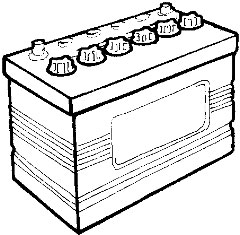Difference between Japan's and China's Car Battery - Vol.147
Automobiles usually employ rechargeable batteries that supply electrical energy to the vehicle for a number of different purposes. In technical terms car batteries are referred to as SLI or starting, lightening and ignition batteries. Its name clarifies the major functions for which a battery is used in cars. Most of the SLI batteries are lead acid which include the lead oxide plates/electrodes submerged into water/acid electrolyte solution having a ratio of 65/35. China and Japan are two leading car battery manufacturing countries in the world.

Batteries manufactured in both these countries differ in quality and specifications. Lead acid batteries are well known for their surge supporting currents and they are mainly used for delivering high power for a short duration of time. The high power is especially required at times when the car is being started or to ignite the engine. As the engines comes into running form the car alternator starts recharging the battery and shares the load of head lights and other electronic equipment present in the vehicle.
When looking at the cost comparison between Chinese and Japanese batteries, China leads Japan since it manufactures a wide range of batteries that are available to consumer at different prices. There are different Chinese brands like Booster, Eastar, FNG and Satis etc. that are easily available to the customers at low prices. The actual cost of these batteries varies in accordance to their charge densities. The higher the charge density of the battery the longer it can provide large volumes of power. Hence the vehicle owners who face battery failure problems are recommended to use higher charge density batteries in their vehicles.
Japanese brands on the other hand, like POWERGOR, Koyosonic, Volta and AGS, are very famous due to their high durability and charge density. Japan is one of the leading countries that hold the conventional car battery manufacturing technology. Almost all the lead acid batteries manufactured in Japan utilize high quality lead oxide plating and electrode. This in return increases the life time of a battery and hence they are more suitable for stable usage. However Japanese batteries are not cost effective and there is a major cost difference between the batteries manufactured in both these countries.
Another factor that is worth comparing is the quality of electrolyte being used in the car batteries. Since Japanese brands have maintained their standards, the manufacturing companies tend to produce a single high quality brand having the most accurate and pure electrolyte concentrations. The electrolyte concentration plays an important role in decreasing the charge time of the battery. Also, the Japanese batteries do not tend to lose their electrolyte and are more heat resistant, so the vehicle keepers do not need to check for the battery electrolyte levels frequently.
The situation is slightly different for the battery manufactures in China. Chinese manufacturers have introduced a number of different qualities under the same brands at different prices. Same is the case with the quality of these batteries, and as the price is increased the quality of the battery also improves. However. the overall analysis indicates that Chinese car batteries are less resistant to heat and lose their electrolytes at a much faster rate. This lack of thermal resistance also declines the level of discharge these batteries can provide.
Practically it has been proven that conventional lead acid batteries can be discharged up to 80% of their total capacity. However, some of the low quality batteries manufactures in China are not able to meet these criteria. Long battery life is the customers main demand and in the future only those battery manufacturers who will be able to provide their customers with batteries that have the highest number of charging and discharging cycles will be successful.